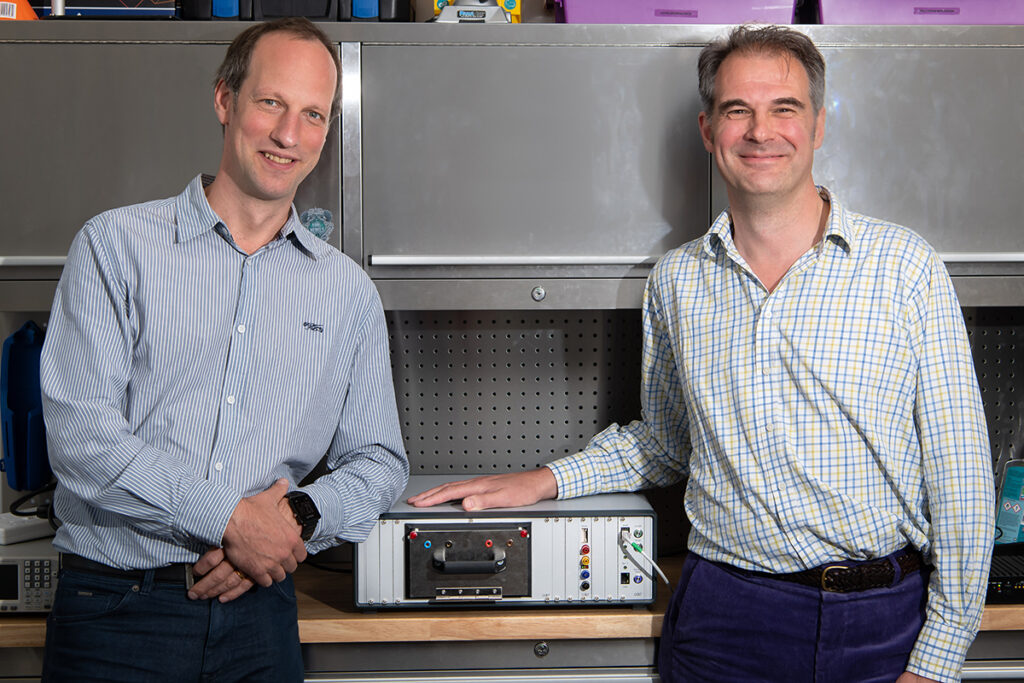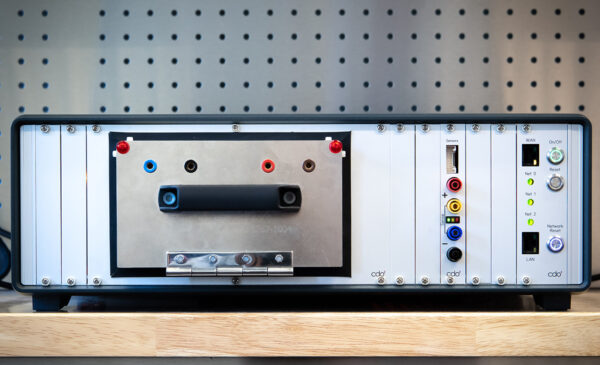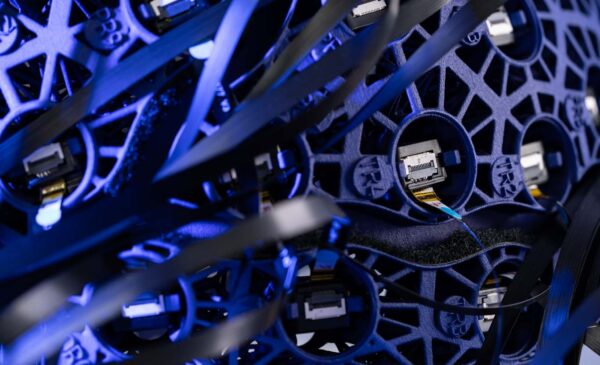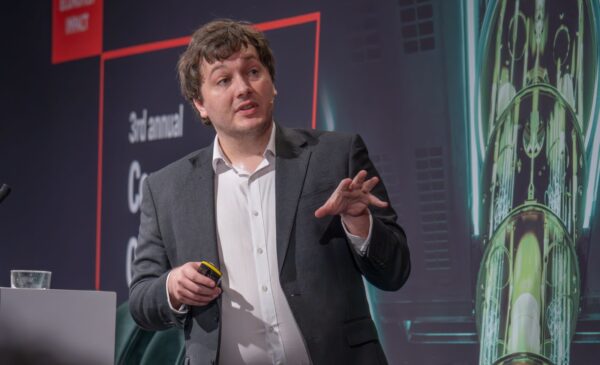A commercial battery imaging system born out of collaborative work with QT Hub researchers at the University of Sussex and CDO2 will be unveiled today at low carbon vehicle technology event, Cenex-LCV (22-23 September).
The new Battery Current Density Analyser is the first electric vehicle product developed using quantum technology to be made commercially available. The device scans electrical vehicle batteries to check for faults, with the aim of accelerating the development of more efficient, safer and more reliable batteries. Such developments are crucial to the future efficiency and environmental sustainability of low carbon vehicles. The Battery Current Density Analyser has been selected for the Government’s UK Pavilion stand at Cenex-LVC, showcasing the best British innovations in low carbon vehicles.
Developed as a battery current density imaging system, the new product will act as a battery camera and be used by researchers and developers – such as those working at electric vehicle manufacturers – to see inside a battery from the outside. The device works by placing batteries in a magnetic shield and then scanning them during charge and discharge cycles. This is valuable when testing prototype battery designs, monitoring consistency of battery manufacturing and investigating the state of health and charge of a battery. The accompanying pre-print research paper, “Non-invasive Current Density Imaging of Lithium-Ion Batteries”, details the science behind the breakthrough technology of this first commercial device from the University of Sussex and CDO2 collaboration.

The research into and development of the product is the result of a four-year long partnership between the University of Sussex Quantum Systems and Devices Group and CDO2, which has been directly funded by Innovate UK and the Advanced Propulsion Centre, with support from the UK Quantum Technology Hub in Sensing and Timing.
“This technology represents a significant step-change in managing the lifespan of electric vehicle batteries, and we are excited to further explore how quantum sensors will open new avenues to help reduce the world carbon footprint.”Professor Kai Bongs, Principal Investigator at the UK Quantum Technology Hub Sensors and Timing
“Battery development and energy storage are crucial to the development of electric vehicles and therefore in tackling climate change. In our research, we are advancing quantum technologies to develop efficient and reliable electrical vehicle batteries for a sustainable future. By providing non-invasive diagnostic tools, which can be used to observe the current flow in batteries without any alteration of or even physical contact with the batteries in the process, we can reduce waste, improve safety and speed production. We use classical and quantum sensors to take magnetic field measurements in batteries. From these we observe the effect of, for example, using rapid charging as opposed to slower charging methods. This will open doors to further research in battery diagnostics. We see now that quantum technologies can be applied far beyond the originally envisaged scope and help to tackle even the arguably most pressing problem of our time: climate change.”Professor Peter Kruger, Head of the Quantum Systems and Devices Group at the University of Sussex
“We are delighted to have reached this significant point in our commercial venture. To see our product on the market is a huge milestone. We know we have got something very new and very exciting in the world of energy storage; a product that has the potential to improve the next generation of batteries. Improving efficiency of battery production and reducing battery waste will mean that more people will have access to affordable and longer lasting electric vehicles and ultimately lead to the broader electrification of transport, even aircraft. There is a big conversation around quantum technologies and how these will be used in the future. Working in collaboration with our academic partners has given us early breakthroughs and rapidly advanced our developments. This is an actual product, developed using quantum technologies, out now.”Dr Gary Kendall, Director of CDO2
“The automotive industry is at a pivotal point and going through a once-in-a-generation transition as we accelerate towards ambitious 2050 environmental targets. In 2019 UK transport accounted for 27% of greenhouse gases, but great ideas will not move the dial on decarbonisation if they’re not commercialised, on the road and taking the place of more polluting technology. The exhibits on this year’s UK Government Pavilion demonstrate how the automotive sector intends to remain at the forefront of research and development of next generation automotive technology, making the UK a beacon location for supply chain and manufacturing investment.”Philippa Oldham, Advanced Propulsion Centre (APC) Director




